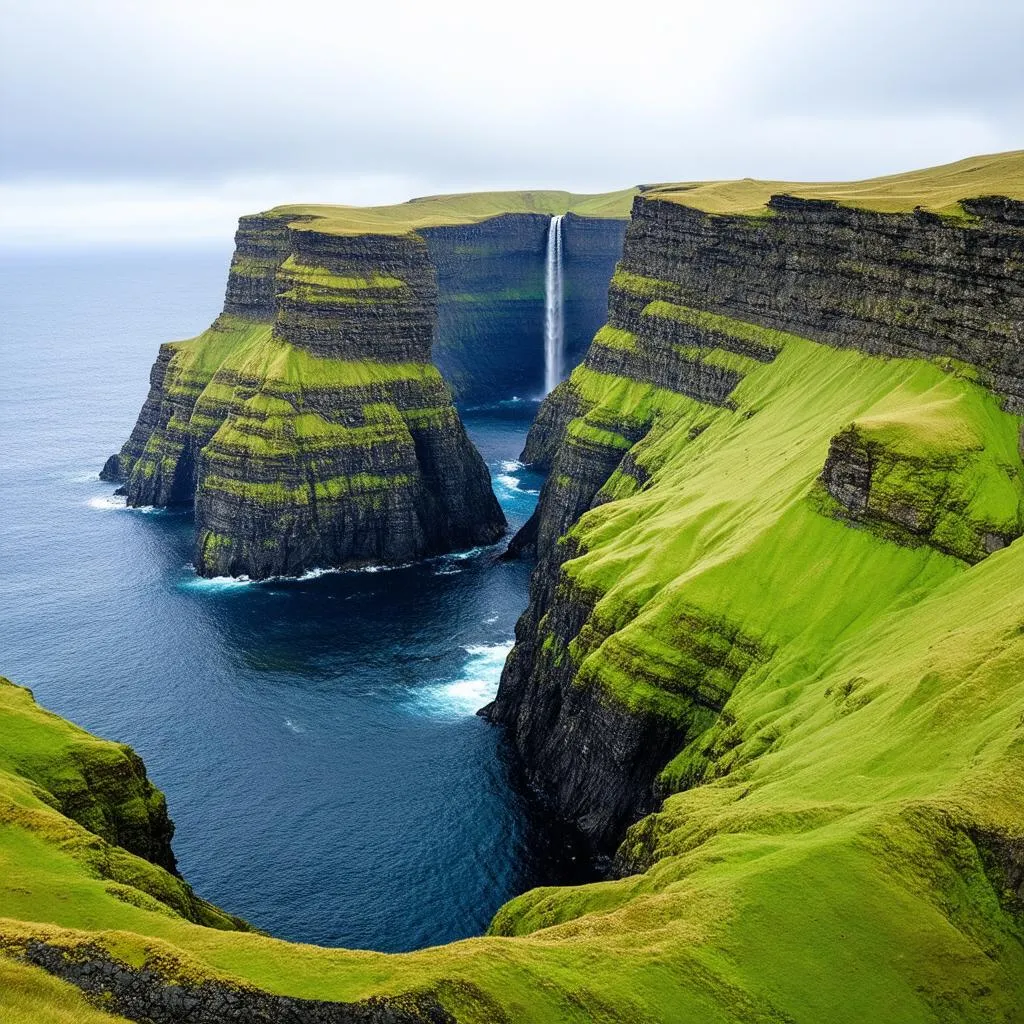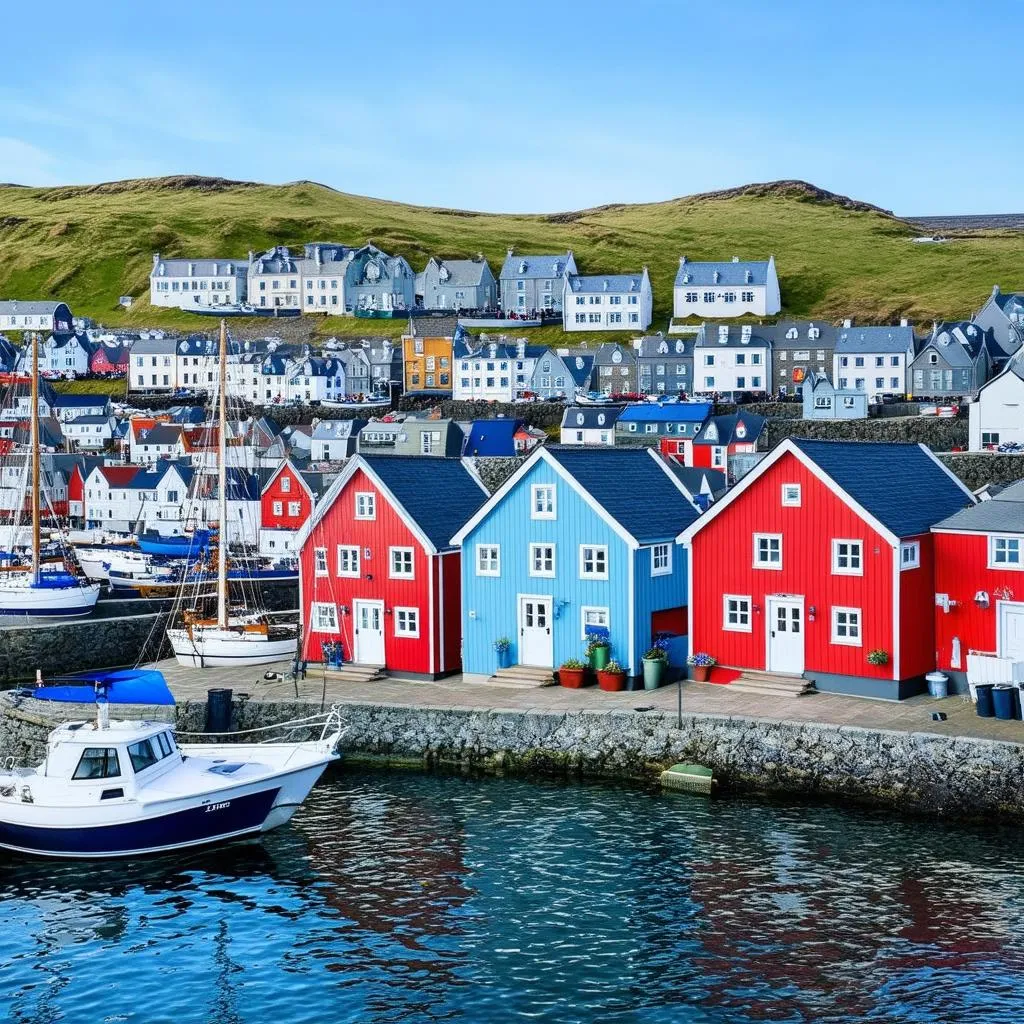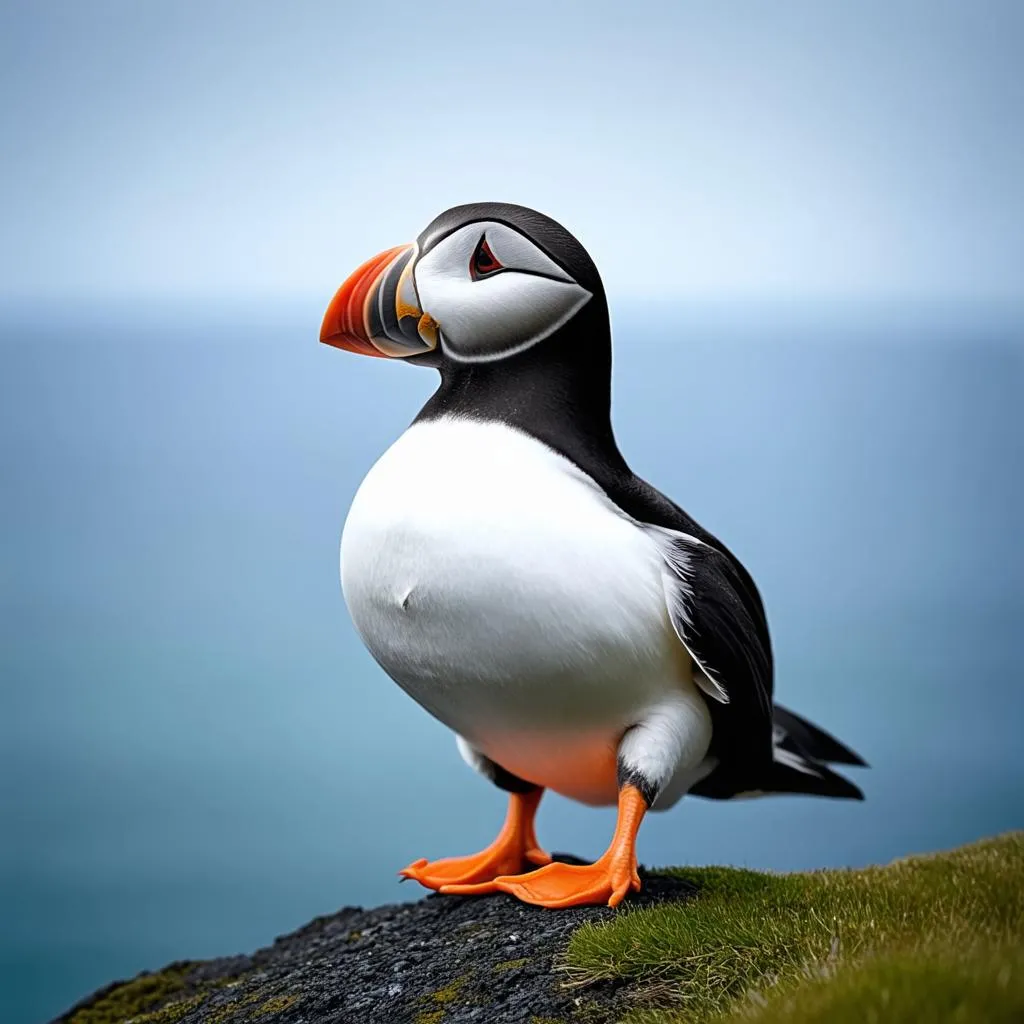“The greatest journey is the one that brings you home to yourself.” – Deepak Chopra
Have you ever dreamt of escaping to a place untouched by the ordinary, a place where jagged cliffs meet crashing waves, and colorful villages dot a landscape seemingly painted by giants? That place exists, in the heart of the North Atlantic Ocean – the Faroe Islands. This archipelago of 18 volcanic islands, a self-governing nation within the Kingdom of Denmark, offers a raw and breathtaking beauty that has captivated adventurers for centuries.
Planning Your Faroese Adventure
Choosing Your Season: A Symphony of Seasons
Each season dresses the Faroe Islands in a different light, offering unique experiences:
- Summer (June-August): Witness the islands bathed in the ethereal glow of the midnight sun, ideal for hiking and exploring.
- Shoulder Seasons (April-May & September-October): Enjoy milder weather, fewer crowds, and the chance to see the Northern Lights dance across the sky.
- Winter (November-March): Embrace the dramatic beauty of stormy seas, snow-capped peaks, and cozy evenings by the fire.
Visa and Entry Requirements: Your Gateway to the Islands
Citizens of many countries can enter the Faroe Islands visa-free for up to 90 days. However, it’s essential to check the specific requirements based on your nationality before you travel. For detailed information, visit the official website of the Danish Immigration Service.
Getting to the Faroe Islands: Your Journey Begins
By Air: Soaring Above the Atlantic
The most convenient way to reach the Faroe Islands is by flying into Vágar Airport (FAE), the only airport on the islands.
Tip: Consider booking flights in advance, especially during peak season, to secure the best deals.
By Sea: Embark on a Scenic Voyage
For a more adventurous approach, consider a ferry journey with Smyril Line from Hirtshals in Denmark to Tórshavn, the capital of the Faroe Islands. This scenic route allows you to experience the vastness of the Atlantic Ocean and offers breathtaking views as you approach the archipelago.
Did You Know? The ferry journey takes approximately 36 hours and offers comfortable cabins, restaurants, and even a cinema onboard.
Exploring the Faroe Islands: Unveiling Nature’s Masterpiece
Getting Around: Navigating the Islands
- Car Rental: Offers flexibility and allows you to explore at your own pace.
- Bus: A cost-effective option for traveling between towns and villages.
- Ferry: Connects the islands and provides stunning views of the coastline.
- Hiking: Numerous well-marked trails cater to all levels of hikers.
Must-See Destinations: Unveiling the Islands’ Gems
- Tórshavn: Immerse yourself in the charming capital city, visit the historic Tinganes district, and explore the Nordic House cultural center.
- Gásadalur Waterfall: Marvel at the cascading waterfall plunging into the ocean, a photographer’s dream.
- Vestmanna Bird Cliffs: Embark on a boat tour to witness the impressive birdlife, including puffins, gannets, and guillemots.
- Saksun: Discover this picturesque village nestled in a valley, surrounded by towering mountains and a lagoon.
- Mykines: Hike to the westernmost island to encounter thousands of puffins during breeding season (May-August).
Embrace the Faroese Culture: A Tapestry of Tradition
- Cuisine: Indulge in fresh seafood, including the local delicacy, dried fish.
- Knitting: Discover the art of Faroese knitting, known for its intricate patterns and high quality.
- Music: Experience traditional Faroese music, characterized by haunting melodies and storytelling lyrics.
Pro Tip: Learn a few basic Faroese phrases to enhance your interactions with the friendly locals.
Frequently Asked Questions: Unraveling Your Queries
Q: What is the best time to see puffins in the Faroe Islands?
A: Puffins are typically found on the islands from May to August during their breeding season.
Q: Is it expensive to travel to the Faroe Islands?
A: The Faroe Islands can be relatively expensive compared to mainland Europe. However, by planning carefully and considering budget-friendly options, you can manage your expenses effectively.
Q: What currency is used in the Faroe Islands?
A: The official currency is the Faroese króna (DKK), which is pegged to the Danish krone.
Conclusion: Your Faroese Adventure Awaits
From dramatic landscapes and abundant wildlife to rich culture and warm hospitality, the Faroe Islands offer a truly unforgettable travel experience. As travel expert, Emily Anderson, from “Wanderlust Chronicles” aptly puts it, “The Faroe Islands are like a hidden gem, waiting to be discovered. They offer a rare combination of adventure, tranquility, and raw beauty that will stay with you long after you leave.” So, pack your bags, embrace the unexpected, and let the magic of the Faroe Islands unfold before your eyes.
Looking for more travel inspiration? Explore these related articles:
- Modern Travel: Tips and Trends for the Savvy Explorer
- Where is the Best Place to Travel in August? Unveiling Summer Paradises
Don’t forget to share your thoughts and experiences in the comments below!
 Faroe Islands Landscape
Faroe Islands Landscape
 Tórshavn Faroe Islands
Tórshavn Faroe Islands
 Puffins Faroe Islands
Puffins Faroe Islands